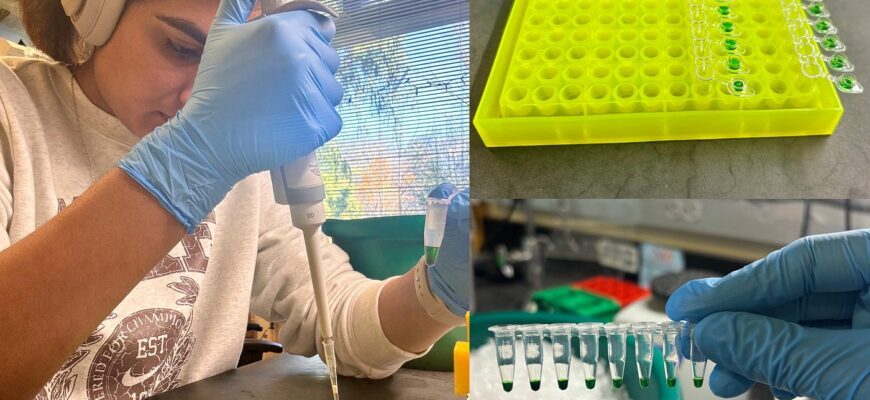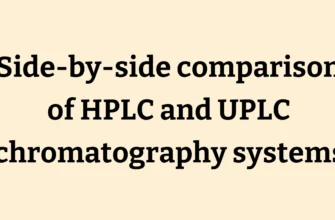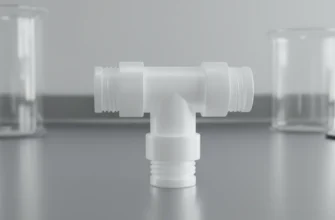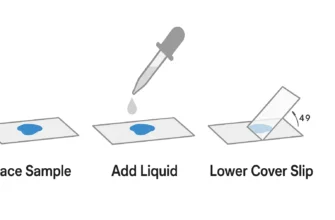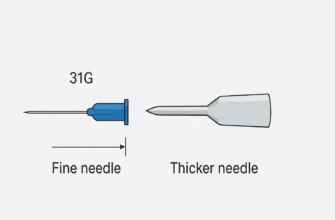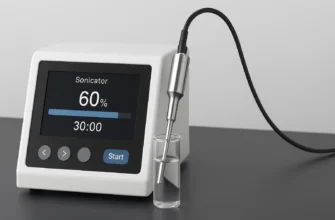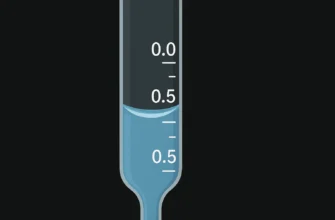A Comprehensive Guide to Pipette Tip Disposal: Ensuring Safety and Compliance in Your Laboratory
In the fast-paced environment of a modern laboratory, the humble pipette tip is a ubiquitous tool, essential for accurate and efficient liquid handling. However, their disposal is a critical process that demands meticulous attention to detail. Improper disposal of used pipette tips can pose significant health, safety, and environmental risks, leading to cross-contamination, exposure to hazardous materials, and hefty regulatory fines.
This guide provides a detailed, review-style overview of the best practices for pipette tip disposal, ensuring your laboratory operations are safe, compliant, and environmentally responsible.
The Critical Importance of Proper Pipette-Tip Disposal
The journey of a pipette tip doesn’t end after dispensing its liquid. The residue it carries, whether chemical, biological, or radioactive, dictates its disposal pathway. Failing to follow correct procedures can have serious consequences.
The Dangers of Mixing Waste Streams
Mixing different types of laboratory waste is not just a matter of poor housekeeping; it’s a significant safety hazard. Incompatible chemicals can react violently, generating toxic gases or even causing fires and explosions. Furthermore, mixing hazardous with non-hazardous waste needlessly increases the volume of regulated waste, driving up disposal costs and the environmental burden. A well-segregated waste stream is the cornerstone of a safe and efficient laboratory.
Identifying the Nature of Contamination
Before a pipette tip can be discarded, its contamination profile must be accurately identified. This crucial first step determines the correct disposal route.
Chemical, Biological, and Radioactive Residues
- Chemical Waste: Tips that have been in contact with corrosive, toxic, flammable, or reactive chemicals are considered hazardous chemical waste. This includes a wide range of substances, from simple solvents to complex organic compounds.
- Biohazardous Waste: This category includes tips used for handling infectious agents, human or animal blood, body fluids, tissues, and cell cultures. These materials have the potential to transmit diseases and require inactivation before disposal.
- Radioactive Waste: Pipette tips used with radioactive isotopes must be disposed of as radioactive waste, following strict protocols to prevent radiation exposure and environmental contamination.
- Non-Hazardous Waste: Tips that have only been used with non-hazardous substances like water, saline, or buffer solutions can often be disposed of as general laboratory waste.
Confirming Exposure: Visual Cues and Lab Records
Accurate record-keeping is paramount. Laboratory notebooks and experimental protocols should clearly document the substances used with each set of pipette tips. Visual inspection can sometimes offer clues—such as colored or viscous residues—but should never be the sole method of identification. When in doubt, always err on the side of caution and treat the waste as hazardous.
Segregation and Collection: A Step-by-Step Approach
Proper segregation at the point of generation is the most effective way to manage laboratory waste.
The Role of Color-Coded Bins and Sharps Containers
A standardized, color-coded waste system is a visual and effective method for ensuring proper segregation. While specific color codes can vary by institution and region, a common system includes:
- Red: Biohazardous waste
- Yellow: Chemical waste
- Black: General, non-hazardous waste
- White/Translucent: Sharps containers
Sharps containers are specifically designed to be puncture-resistant and are essential for the safe disposal of items that can pierce skin, such as needles, scalpel blades, and, in many cases, pipette tips.
Step 1: Determine the Contaminant
Immediately after use, ascertain the nature of the substance the pipette tip came into contact with.
Step 2: Sort by Contamination Category
Based on the contaminant, select the appropriate, clearly labeled waste container. These containers should be conveniently located within the laboratory to encourage immediate and correct disposal.
On-the-Spot Treatment for Hazardous Waste
Certain types of waste require treatment to render them safe for final disposal.
Autoclaving for Biohazardous Tips
Pipette tips contaminated with biological materials must be decontaminated, typically by autoclaving. This high-pressure steam sterilization process effectively kills microorganisms. Biohazardous tips should be collected in a designated, autoclavable container, which is then processed according to your facility’s specific autoclave protocols.
Decontamination Protocols for Chemical Residues
For some chemical contaminants, a decontamination step may be necessary. This could involve rinsing the tips with a specific neutralizing agent. However, it’s crucial to ensure that the rinsing process itself does not create a new hazardous waste stream. Always consult your facility’s chemical hygiene plan and Standard Operating Procedures (SOPs) for guidance.
Packing and Labeling: The Keys to Safe Transport
Once collected, waste must be packaged and labeled correctly for transport and disposal.
Approved Containers for Each Waste Type
Use only containers approved for the specific type of waste they hold. These containers are designed to be durable, leak-proof, and compatible with their contents.
Clear and Comprehensive Labeling
Proper labeling is a regulatory requirement and a critical safety measure. All hazardous waste containers must be clearly labeled with:
- The words “Hazardous Waste”
- The full name of the chemical(s) or a description of the biological material
- The associated hazards (e.g., flammable, corrosive, biohazard symbol)
- The date the waste was first added to the container
- The name and contact information of the responsible researcher or laboratory
Secure Closure to Prevent Leaks
Ensure all waste containers are securely closed when not in use and before being moved for disposal. This prevents spills and the release of hazardous vapors.
Final Disposal Procedures
The final step is the safe and compliant transfer of waste to the appropriate disposal vendor.
Hand-off to Institutional EH&S or a Contracted Vendor
Most research institutions have a dedicated Environmental Health & Safety (EH&S) department that manages hazardous waste disposal. Familiarize yourself with your institution’s procedures for requesting a waste pickup. This typically involves completing a manifest or request form.
The Importance of Documentation
Maintain meticulous records of your waste disposal. This includes copies of waste manifests and pickup schedules. These documents provide a crucial paper trail for regulatory compliance.
Frequently Asked Questions (FAQ)
“Can pipette tips go into sharps bins?”
This is a common and important question. In many institutions, all pipette tips are considered “sharps” because they can potentially puncture skin or pierce through standard waste bags, posing a risk of injury and exposure. Therefore, they should be disposed of in a designated sharps container. However, policies can vary, so it is essential to consult your facility’s specific guidelines. Non-contaminated tips, in some cases, may be permitted in a separate, puncture-resistant container for general waste.
Eco-Friendly Alternatives and Recycling
While safety is paramount, environmental responsibility is also a key consideration in modern laboratories.
Programs for Tip-Box Recycling
Several companies now offer recycling programs for pipette tip boxes. These programs provide a sustainable alternative to landfilling the plastic containers. Investigate these options to reduce your lab’s plastic waste footprint.
Low-Waste Tip Racks and Refill Systems
Consider using pipette tip systems that are designed to minimize waste. Refillable tip racks and systems that use less plastic packaging are becoming increasingly available and can significantly reduce the amount of waste your lab generates.
Common Pitfalls and How to Avoid Them
Overfilling Sharps Containers
Never fill a sharps container more than three-quarters full. Overfilling makes it difficult and dangerous to seal the container and increases the risk of needlestick injuries.
Mixing Incompatible Wastes
As emphasized earlier, never mix incompatible waste streams. Always use separate, clearly labeled containers for different types of hazardous waste.
Ignoring Local Regulations
Waste disposal regulations can vary by state and municipality. Ensure you are familiar with and adhere to all local, state, and federal regulations governing laboratory waste.
Your Institution’s Policies and Regulations
Adherence to Federal and State Lab-Safety Guidelines
Laboratories in the United States are subject to regulations from agencies such as the Environmental Protection Agency (EPA) and the Occupational Safety and Health Administration (OSHA). These agencies provide comprehensive guidelines for the management of hazardous waste.
Finding Your Facility’s Standard Operating Procedures (SOPs)
Your institution’s EH&S department is the primary resource for all waste disposal procedures. They will have detailed SOPs that are specific to your facility. These documents are often available on the institution’s website or can be requested directly. Always defer to your facility’s specific SOPs.
Final Thoughts and Essential Resources
Safe and compliant pipette tip disposal is a fundamental aspect of responsible laboratory practice. By implementing the procedures outlined in this guide, you can protect yourself, your colleagues, and the environment.
Quick-Start Checklist for Pipette Tip Disposal
- Identify: Determine the type of contamination (chemical, biological, radioactive, or non-hazardous).
- Segregate: Choose the correct color-coded and labeled waste container.
- Treat (if necessary): Autoclave biohazardous tips or decontaminate chemical residues as per your lab’s SOPs.
- Package: Use approved, leak-proof containers.
- Label: Clearly and accurately label all hazardous waste containers.
- Dispose: Follow your institution’s procedures for waste pickup and disposal.
- Document: Maintain records of all waste disposal activities.
Further Resources
For more detailed information, consult the following resources:
- Your institution’s Environmental Health & Safety (EH&S) department website.
- The Environmental Protection Agency (EPA) website for hazardous waste regulations.
- The Occupational Safety and Health Administration (OSHA) website for laboratory safety standards.
For immediate assistance with a spill or a question about a specific waste stream, do not hesitate to contact your facility’s EH&S support team. Their expertise is invaluable in ensuring a safe and compliant laboratory environment.

